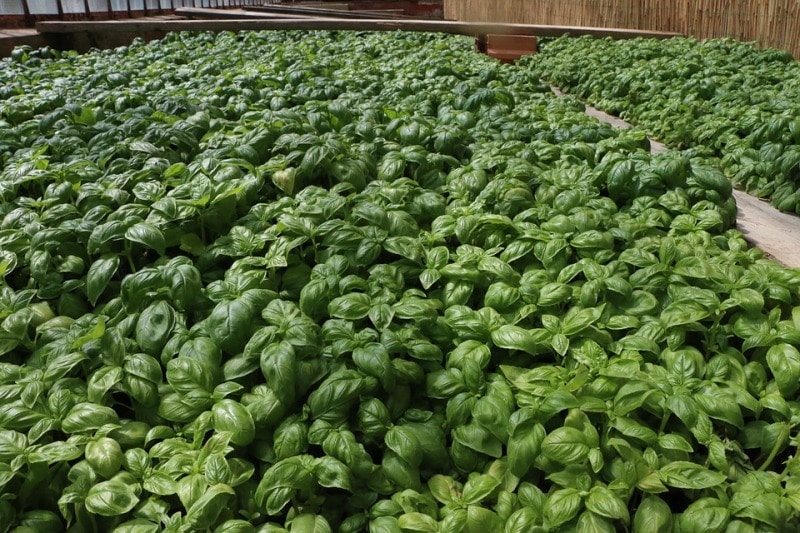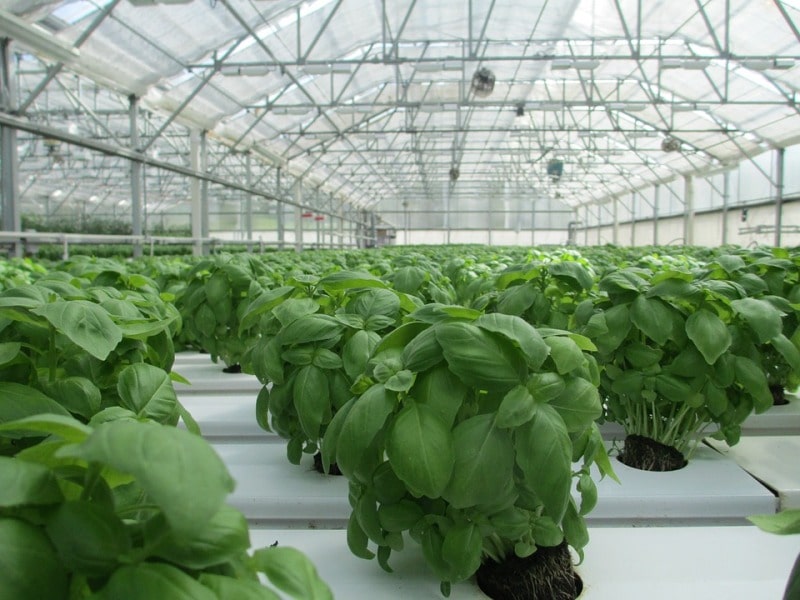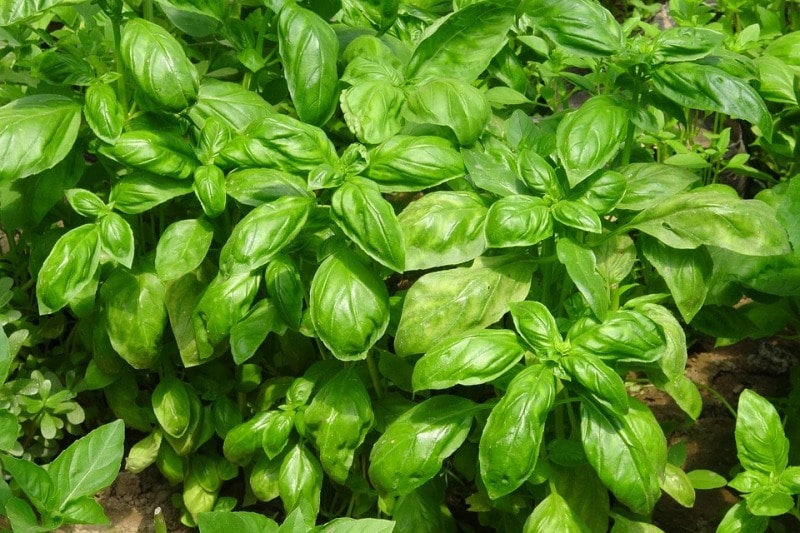Growing Basil, planting, care and Harvesting – A Full Guide
Wow, you want to grow wonderful herb basil at your home, indoors or outdoors? You are in the right place to know about basil growing techniques and tips. Basil is a herb which is fragrant and also popular. It also has many culinary uses. Basil has almost hundreds of varieties which have somewhat different tastes from each other starting from Thai spicy Basil to Italian sweet Basil. Most of the plants of Basil can be grown easily in the outdoor locations and with a few simple modifications, Basil can also be grown indoors without much confusion. An appropriate amount of water and sunlight are the main things for the Basil to survive irrespective of the area of plantation.
Basil will be available in several varieties, each of the Basil varieties have the flavor and smell which are unique. You will have to know about several different types of Basil and choose one or many which you find appealing and then you will have to order the seeds or purchase them at any garden store present in your locality. Below are a few ideas:

- Cinnamon Basil is the one which will smell like a spice which is sweet and it will have the flowers which are fragrant and also beautiful.
- Lemon Basil is the one which will generally consist of an aromatic compound called citral which is mostly found in the fruit and it smells like a lemon.
- Purple Basil is mostly grown for the purpose of decoration as well as for its flowers and also scent.
- There are Basils which are perennial and come back every year. These perennial Basils are like Thai Basil, African blue Basil whereas others are annual which you can plant every year.
- Globe and Greek Basil are very difficult for growth, but they form some little bushes which will stay contained in a good manner.
Growing Basil from seed:

You may be interested in checking How to Grow Collard Greens.
- Basil will require the air which is warm and sunlight to survive well, so it is mostly easy to start the seeds in the indoor locations rather than taking a risk of the frost which will damage them.
- If you are residing in a place where the climate is hot, you can start the seeds in the outdoors.
- In order to figure out when the last frost takes place, you can get in touch with other gardeners residing in your area.
- You can start growing Basil in pots. Fill the flats or each seed containers with a combination of the same amounts of vermiculite, perlite, and peat. The mixture has to be pressed in a slight manner for the elimination of air pockets. The mixture has to be dampened by making use of water so it would be ready to give the correct climate for the Basil seeds to undergo the process of germination.
- One or two Basil seeds have to be dropped into each and every container. These seeds have to be covered with the soil in a light manner. The containers have to be covered by making use of plastic kitchen wrap which is clean. This is done to keep them moist. The containers have to be kept near a sunny window. The plastic wrap has to be removed and the water has to be sprinkled on the containers for two times a day.
- It is very essential to keep your Basil seeds warm after the plantation is done. You must also take into consideration the usage of heat mat or an overhead lamp for keeping them in a warm state.
- When you find the first green tendrils, you will have to push them up across the soil, it is the perfect time to remove the plastic wrap. The sprouts have to be watered for two times on a daily basis and you should never let the soil to get dried. When the plants will reach the length of few inches and the maturity of leaves takes place, you can go ahead and transplant them to a container which is larger in size.
- When you see that there is a formation of two sets of leaves, then you can plant the Basil in the garden or in the permanent containers. Basil will not be able to resist frost so make sure that you are not planting them too early. It is always best to keep the Basil at a place where it will receive a good amount of sunlight and have soil which is well-drained.
- For the plantation of Basil in the garden, you will need to dig the holes each spaced at a minimum distance of 1 foot from each other. The roots have to be placed in the holes and the soil has to be placed around the stems. The soil has to be patted around the Basil plants for the elimination of air pockets.
- If you are interested in the plantation of Basil in the container, you will need to ensure that the container is sufficiently large for the accommodation of many numbers of plants which you are growing as they have to be planted at a distance of 1 foot from each other. This is because they grow somewhat large.
Growing Basil from cuttings:
- Basil can also be propagated from cuttings and this process of growing Basil from cuttings is also quite simple. The propagation of Basil is one method to share your Basil with your neighbors or friends. You will just be required to take a Basil cutting of length 4 inches which is available right below the leaf node. The leaves have to be removed from the Basil cutting for about two inches from the end.
- Always ensure that the Basil cutting is a piece which has not undergone flowering yet. This cutting can be kept in a water glass on the windowsill where it would be able to receive a good amount of sunlight. You will have to make use of a clean glass so that you can monitor the propagation of Basil from roots.
- Water has to be changed for every few days until the growth of root appears, and then you can leave your propagation roots of Basil for growth until they reach a length of 2 inches. For this process to complete, it would take approximately 15 to 30 days.
- Once you see that the Basil cutting roots are at a length of 2 inches, then you can plant the Basil cutting in a pot and place it in the indoor location. The planted has to be placed where it would be able to receive direct sunlight.
Care and maintenance of Basil:

You may be interested in reading How to Grow Moringa from Seeds, Cuttings.
- Basil will grow its best in the soil which is well-drained and it should never be left in standing water. The Basil plants which are matured have to be watered once a day, that is in the morning so that the water will have some time to get soaked and also for undergoing the process of evaporation instead of sitting on the plants for the complete night.
- There is also a requirement for pruning Basil. When you see the flower buds appearing, you will have to pinch them along with the two pairs of leaves under them. Flowers which are blooming will create a change in the hormone which will decrease the flavor of leaves, as well as decrease the foliage amount which will grow. This is known as bolting and this happens when there is an additional amount of sunlight. You will also notice the plants becoming lanky and the leaves will not be tasty when you leave the flowers.
- Basil plants get attracted to Japanese beetles. The best way for controlling the pests is to pick them from the plants manually by making use of hands. If your plants show indications of the growth of mold, it means that they are not getting a good amount of sunlight or they are very close to each other. The smaller plants have to be removed to give space for the larger plants.
Harvesting Basil:

- As the Basil plant gets matured, you will have to remove the top two pairs of leaves once a stalk will reach the required height. If you monitor closely, at every leaf’s base, there will be two little leaves which will grow to the outer direction if the stem which is growing between them is removed. You will have to cut the stem which is growing in between them. Those little leaves have to be cut close but always make sure that you are not damaging them.
- Pinching will encourage the energy of the plant to be directed into its stems which are stronger and the leaves. This will help the plants to grow in a bushy manner.
- Make sure that you are not pinching the lower section of the stem or the Basil plants which will grow reedy and tall. If you need them to get bushy, make sure that you are pinching them from the top.
You may be interested in How to Grow Bottle Gourd on the Terrace.
Storing Basil:
- You will have more amount of Basil for you such that you will not be able to consume all of it at once. So make sure that you are storing them in a refrigerator. The leaves have to be rinsed and wrapped in paper towels. These leaves have to be placed in a container which is used for storing food. This container should have an air-tight lid.
- If you freeze the leaves completely, it will not work well. But if you puree the leaves and then freeze, you can then store the Basil in the freezer for several months. The Basil has to be placed in a blender along with a tiny amount of water, olive oil, and lemon juice. It can made as a puree until it becomes smooth and then place it in a food storage bag and freeze it until you make use of it.
Facts about Basil:
- As Basil is commonly grown in the outdoor locations, this can also be grown easily in indoor locations too. Growing Basil indoors is also possible and it is in the same way as you grow them outdoors like a garden.
- Generally, Basil is grown as a tender annual. The growth cycle of Basil will not accept overwintering. It will die and the seeds which become hard will wait in underground all over the winter and then undergo the process of germination at the time of spring.
- A major reason for the trouble with Basil is the soil and watering. Basil is not a plant which is hardy and this is the reason why its stem will restore water. So you can crush the stem in between your fingers and you will be able to see that it’s watery. If you are overwatering the roots, it causes the roots to become rot and Basil will die.
You may be interested in Poplar Tree Plantation, Spacing, Profits.